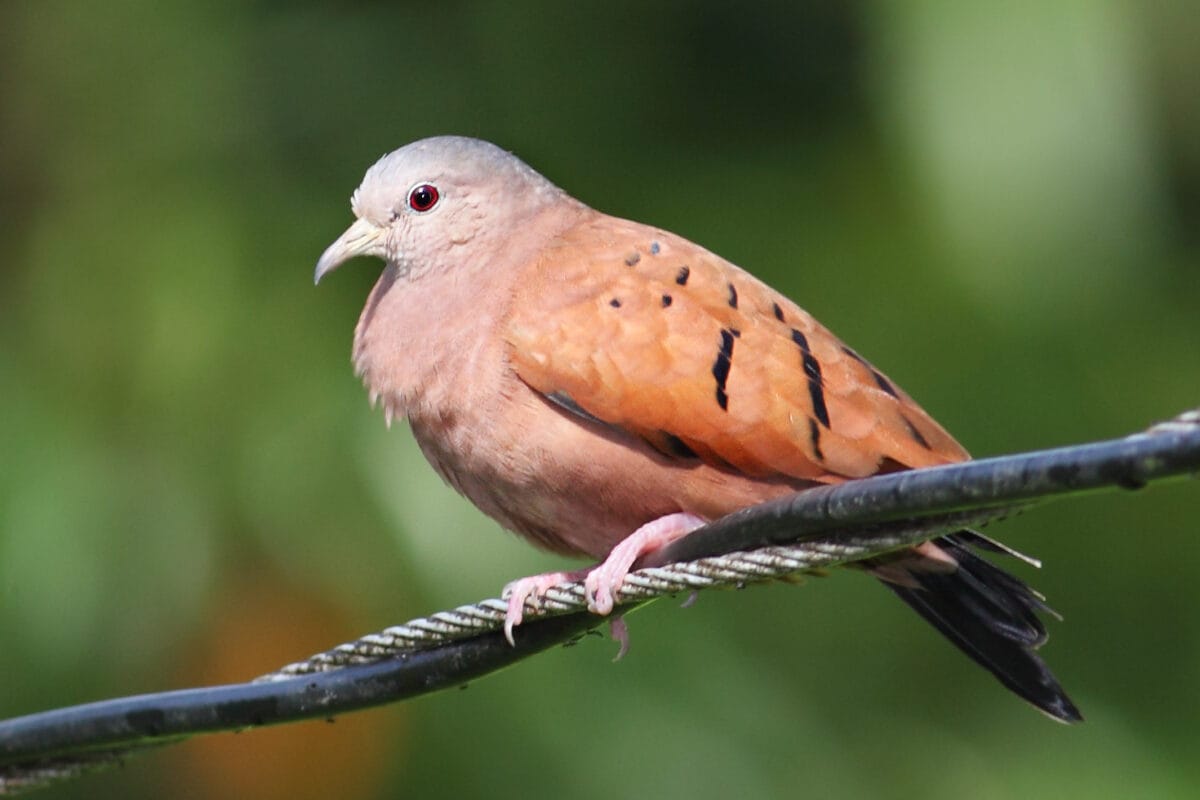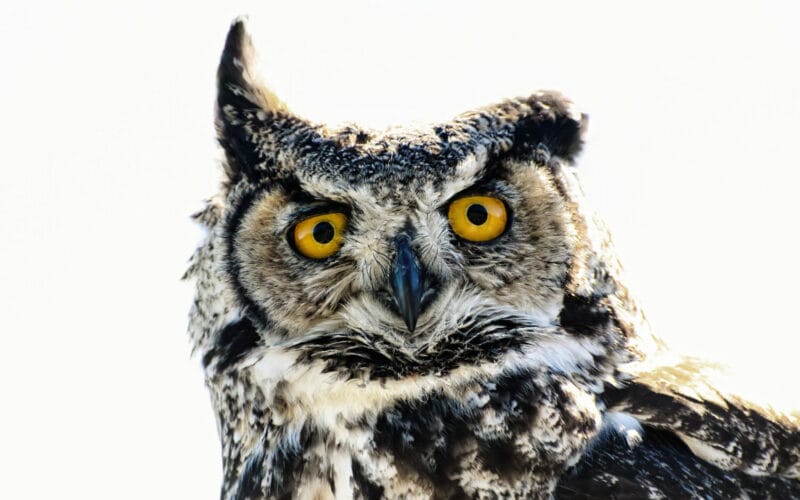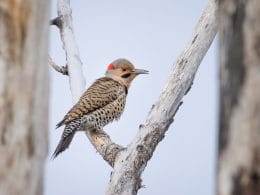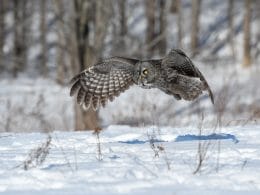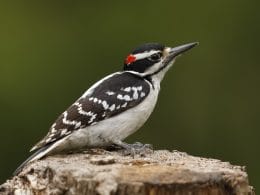In this post we are looking at doves that are native to the United States. Doves are part of the Columbidae family along with pigeons and there are 4 genera. For our purposes we are looking at just those named doves. How many are in the U.S.?
What is a dove?
Doves are generally defined in fairly unflattering terms like stocky and stout-bodied birds. However, we know them as being gentle birds in both appearance and sound. They tend to be scarcer than their pigeon cousins and of course Feral Pigeons give them all a bad wrap.
Doves are distinct from pigeons as they tend to inhabit more forested areas and be generally much more shy. Their plumage ranges from dull to exotic. We will look at all of the species found in the U.S. Any that are classed on eBird as feral or exotic are not included.
Doves of the United States
Inca Dove (Columbina inca)

Identification and Size
The Inca Dove is a rather plain bird with a long tail. It is a pale brown/gray color with scales across the back.
Size
Length: 6.5-9.1 in (16.5-23 cm)
Wingspan: 11.2-12.5 in (28.5-32 cm)
Weight: 1.1-2.0 oz (30-58 g)
Distribution
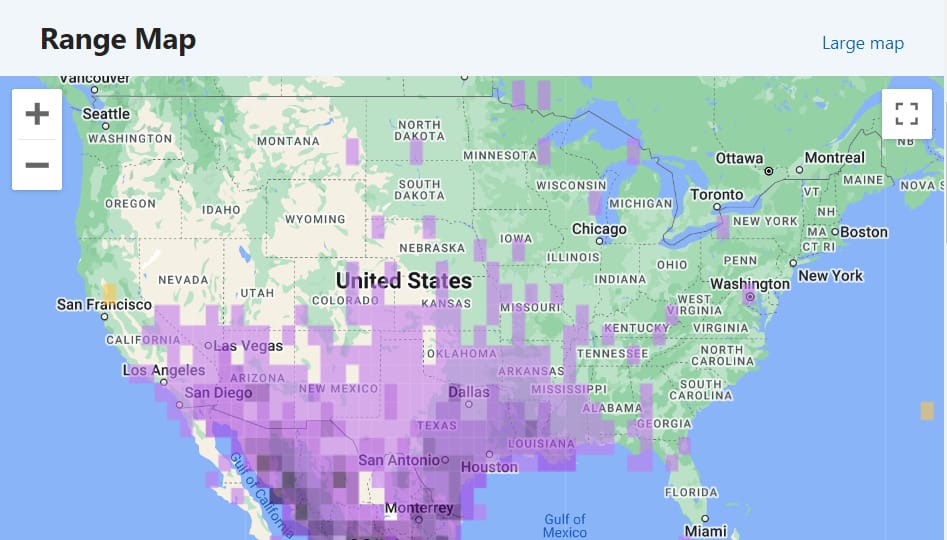

As seen in the eBird Range Map and Distribution Chart above, the Inca Dove is present all year round in the southern half of the U.S.
Call
Interesting Fact
The Inca Dove doesn’t like the cold. They will huddle together and try to find some sunshine. They will even pyramid roost by piling on top of each other.
Common Ground Dove (Columbina passerina)

Identification and Size
This is another small, plain dove but it is a darker, sandy color with distinctive dark spots on the wings.
Distribution
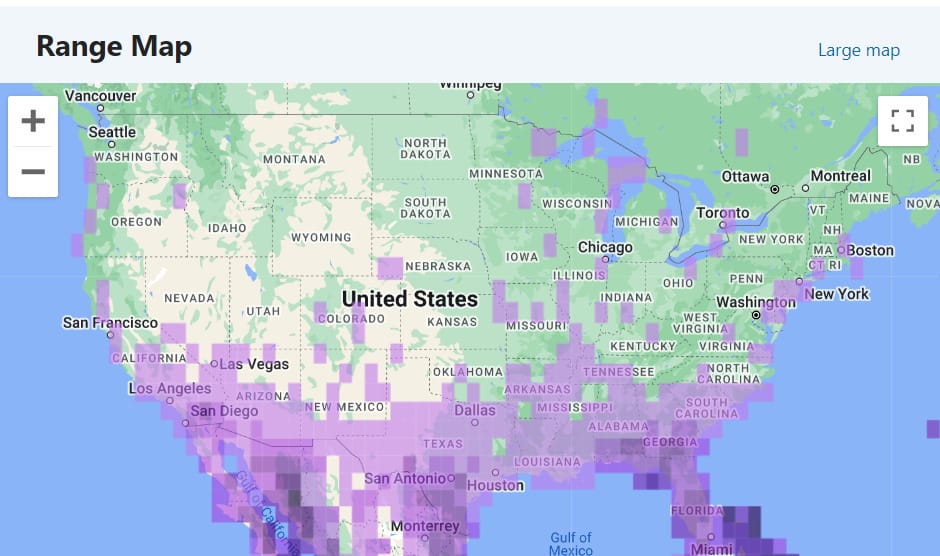

The Common Ground Dove is another southern bird but is ventures even less into the center. It can be seen all year round.
Size
Length: 5.9-7.1 in (15-18 cm)
Wingspan: 11 in (27 cm)
Weight: 0.92-1.41 oz (26-40 g)
Call
Interesting Fact
Although this dove is only the size of a sparrow, it needs to eat over 2,000 seeds every day to sustain itself.
Ruddy Ground Dove (Columbina talpacoti)
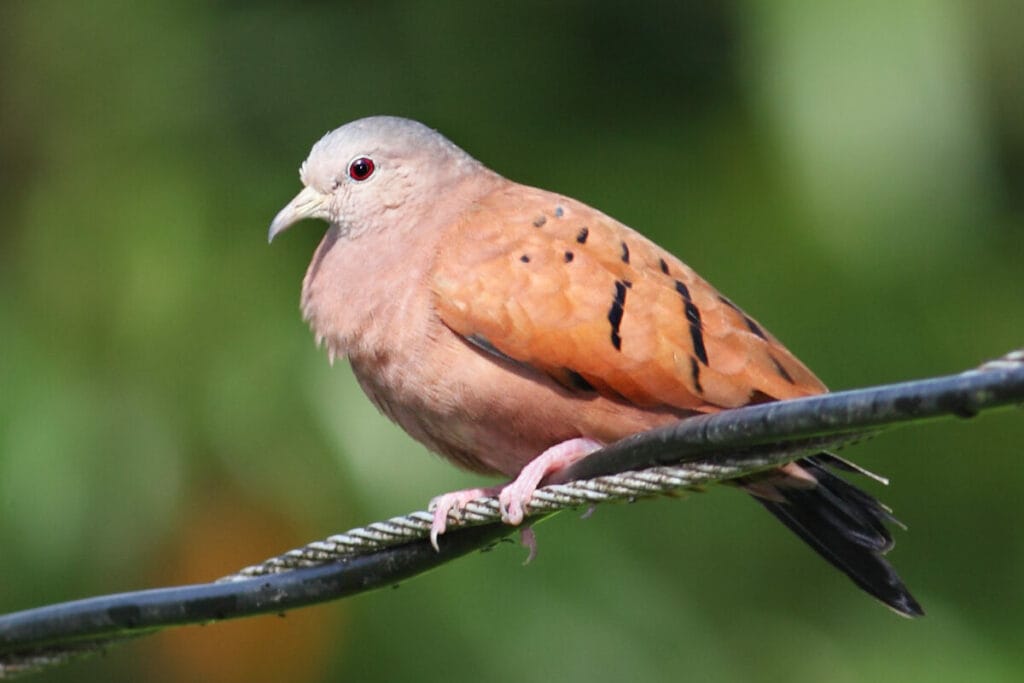
Identification and Size
The Ruddy Ground Dove is aptly named with a gorgeous red tinge to its plumage. Black bars mark the back and wings and the front fades to a blush.
Length: 6.7 in (17 cm)
Weight: 1.7 oz (47 g)
Distribution
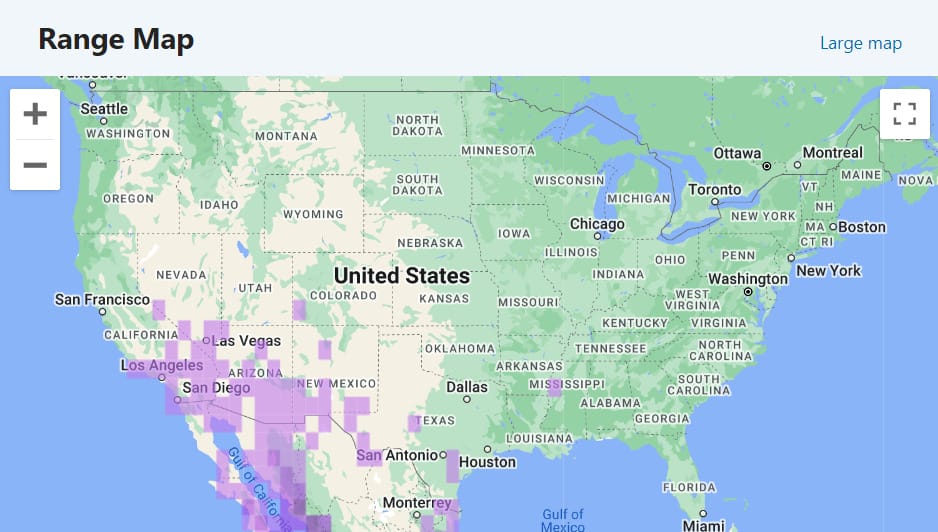

The Ruddy Ground Dove is a Central American Dove that is a rare visitor to southern California and Texas.
Call
Interesting Fact
This dove has been seriously affected by the destruction of its habitat. However, it has proved to be adaptable and has moved into more built up areas.
Key West Quail-Dove (Geotrygon chrysia)
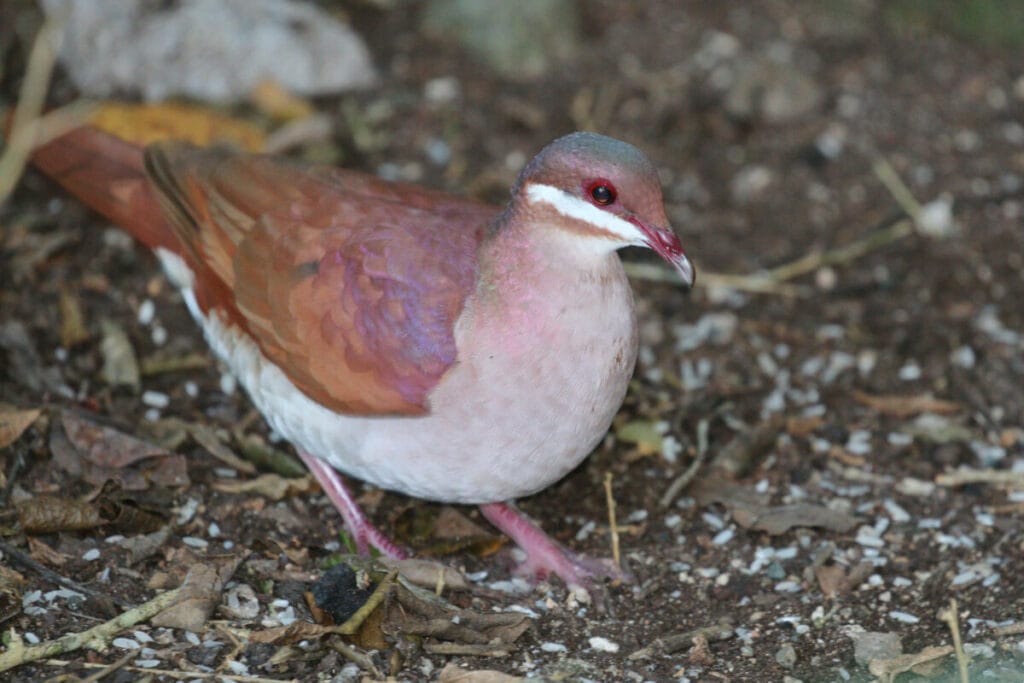
Identification and Size
A striking dove with paler front and darker back. A thick white stripe across the face is distinctive. There is a purple tinge to the shoulder.
Length: 10.6-12.2 in (27-31 cm)
Weight: 3.9-7.5 in (109-212 cm)
Distribution


This dove is really a Caribbean breeder and is a non-breeding vagrant to Florida. It lives in dense forest shrubbery.
Call
Interesting Fact
The Key West Quail-Dove was a summer breeder in Florida until the mid 1800s, when presumably human interference saw it leave for the Caribbean permanently.
White-tipped Dove (Leptotila verreauxi)

Identification and Size
Similar to the other dove species, this bird is so named because of the white edges to its tail feathers.
Length: 11 in (28 cm)
Weight: 5.5 oz (155 g)
Distribution


The White-tipped Dove can be found on rare occasions throughout the year in south west Texas.
Call
Interesting Fact
The White-tipped Dove is unlike others in a couple of ways. Firstly, it keeps the nest nice and tidy, removing waste and replacing nesting material. It is also more aggressive than other doves, chasing others away from feeding areas.
White-winged Dove (Zenaida asiatica)
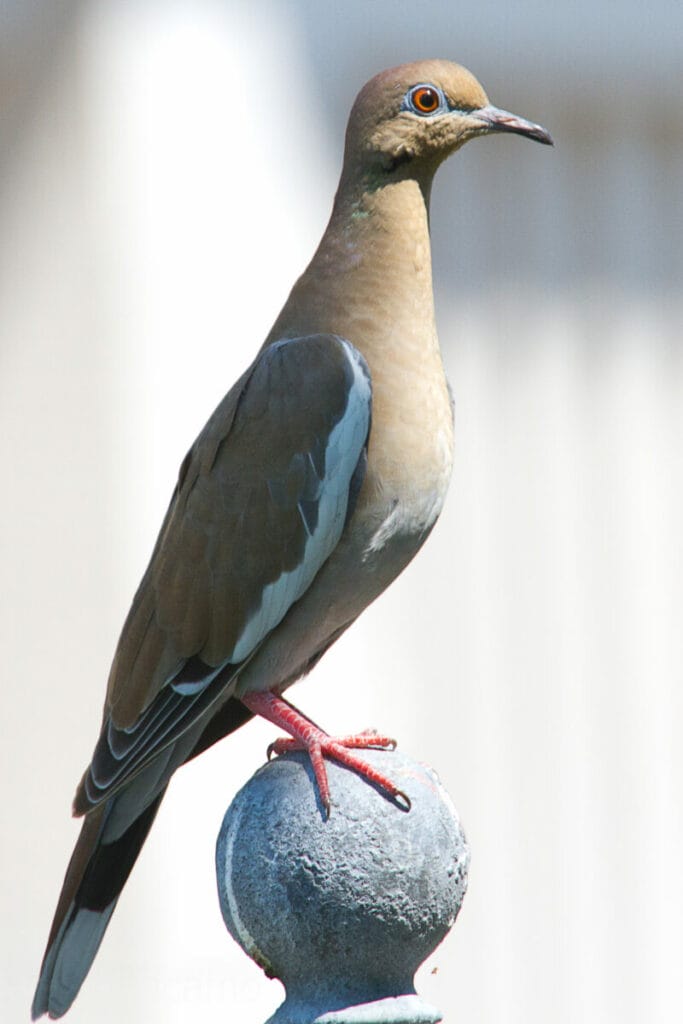
Identification and Size
This plain dove is marked by strong white bars on the wings. It also has a pale eye ring.
Length: 11 in (29 cm)
Wingspan: 18.9-22.8 in (48-58 cm)
Weight: 5.3 oz (150g)
Distribution
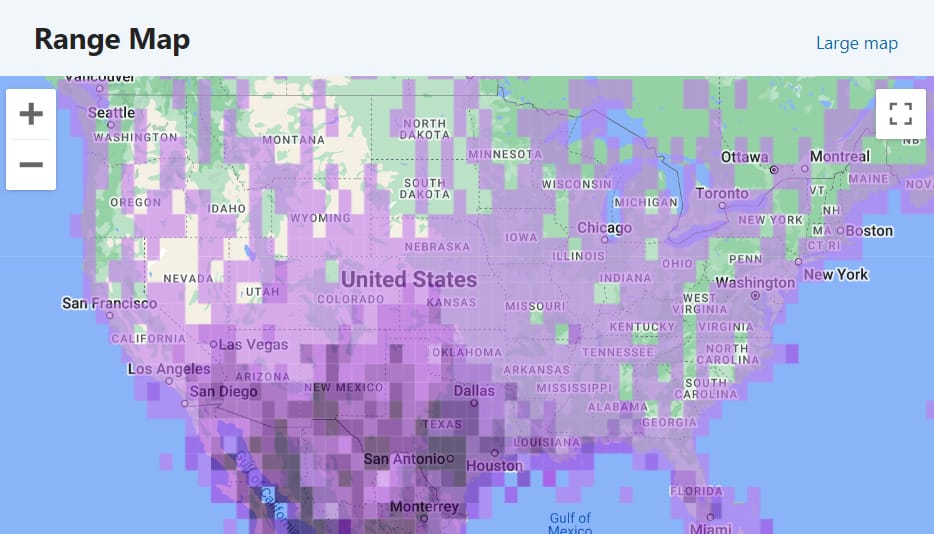

Seen throughout the year, the White-winged Dove is resident across the south of continental America and less so moving north.
Call
Interesting Fact
The White-winged Dove is a master of adaptability and can be found in dry, urban and open field areas.
Zenaida Dove (Zenaida aurita)
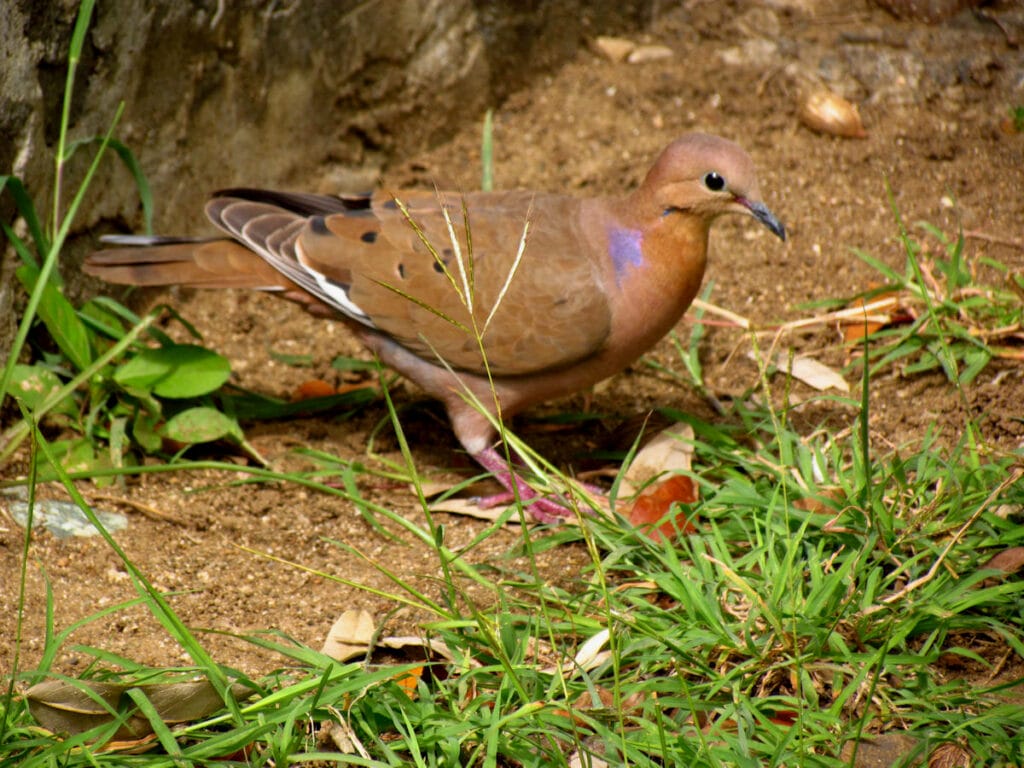
Identification
This dove looks a lot like the other mashed together with colors on the shoulder, white on the wings and spots on the back.
Length: 11-12 in (28-30 cm)
Wingspan:
Weight: 3.3-6.8 oz (95-195 g)
Distribution
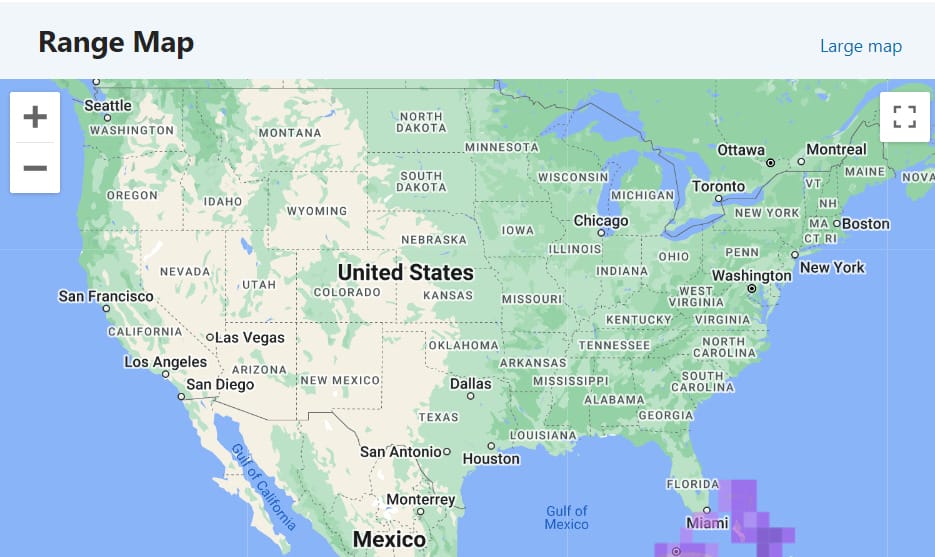

Another rare visitor to Florida, sighting number under 500. This is a Caribbean bird only visiting the U.S. as a vagrant.
Call
Interesting Fact
This dove is locally considered a game bird and is under threat from hunting. Despite that and because of habitat destruction, it is moving into urban areas.
Mourning Dove (Zenaida macroura)
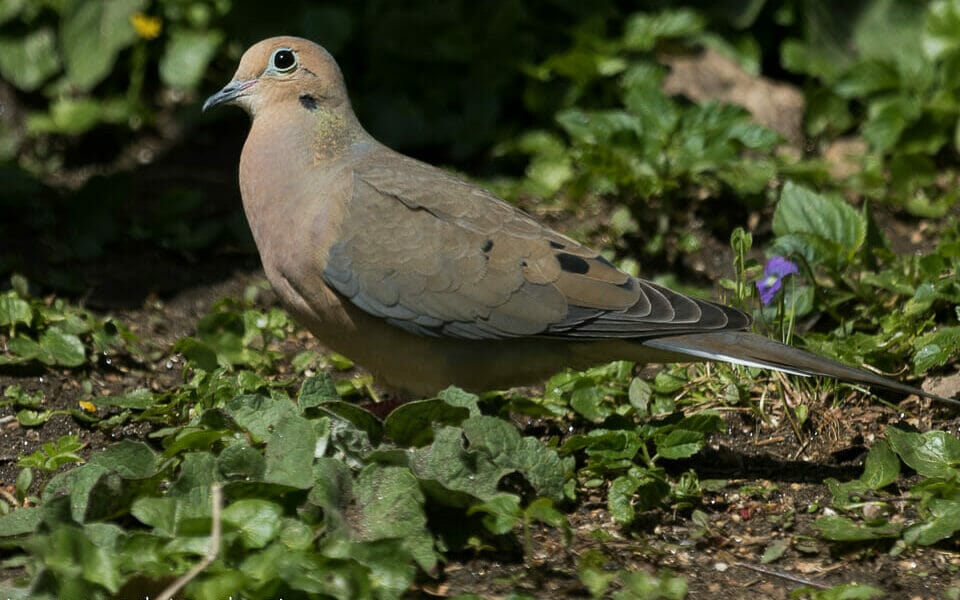
Identification
The most common dove across America, it is a mid-brown with dark spots on the back.
Length: 9.1-13.4 in (23-34 cm)
Wingspan: 17.7 in (45 cm)
Weight: 3.4-6.0 oz (96-170 g)
Distribution
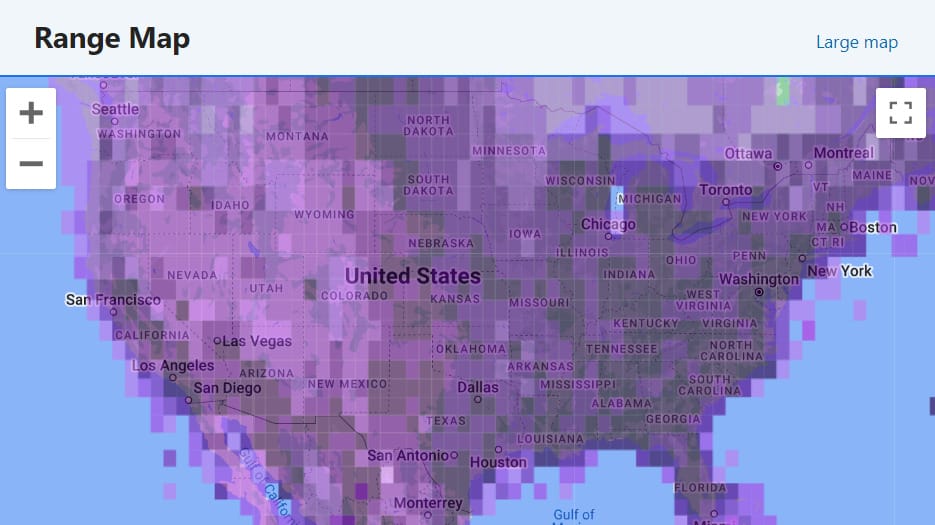

A very common resident of all habitats across the entire continental U.S. with some sightings in Alaska and introduced to Hawaii.
Call
Interesting Fact
When breeding a female dove can sometimes be seen flying alongside 2 males who are competing for her attention.
Conclusion
And there we have it. It is amazing that there are only 8 species of dove found in the U.S., with only the Mourning Dove widespread across the country. 4 species are rare vagrants to continental America, leaving 3 other resident species. When I think of doves I have seen, I can only name the Mourning Dove and so it should be no surprise that there are not more, but somehow it is!
FAQs
The Rock Dove or Feral Pigeon is the most common and widely spread. The others are: Collared, Spotted, Zebra, Ring-necked, Diamond, Laughing, Namaqua Doves are all feral or escapees.
Around 2 years.
There are several names for them. These include: cote, dole, dule, bevy, flight, and piteousness




